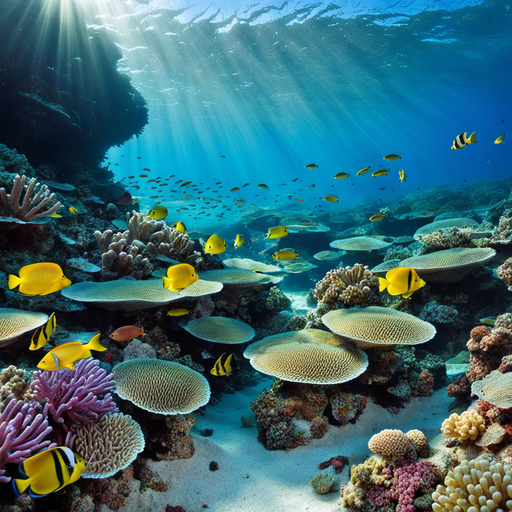Exploring the Depths: The Future of Undersea Terrain Mapping
Advancements in Undersea Terrain Mapping Technologies
The exploration of the world's oceans has entered a new era, thanks to significant advancements in undersea terrain mapping technologies. UTEC's Gavia Autonomous Underwater Vehicle (AUV) recently completed its deepest dives offshore Australia, showcasing impressive upgrades that allow it to remain submerged for an entire 12-hour mission without surfacing for GPS updates. This is made possible by the inclusion of new modules such as subsea Ultra-Short Baseline (USBL) for enhanced internal navigation, fully utilizing its 1,000-meter depth rating.
In the realm of climate research, the AUV known as Boaty McBoatface has been instrumental in exploring remote ocean areas, including the challenging environments under Antarctic ice shelves. The National Oceanography Centre (NOC) has developed autosub AUVs capable of diving up to 6,000 meters, providing comprehensive data collection for ocean monitoring. These AUVs are equipped with advanced sensors to measure critical data such as temperature, salinity, and seabed shape.
The industry has also seen the introduction of Kongsberg's Hugin Endurance AUV, the largest in its family, designed for multi-role operations over approximately 2,200 kilometers. Vaarst's development of the world's first real-time data collection system for deep waters marks a significant leap forward for the marine ecology and salvage industries. Additionally, Nauticus Robotics has secured over $12 million in funding to advance autonomous subsea robots, including the Aquanaut robot designed for deep-water inspection.
Collaborative Efforts and Environmental Considerations
The Ocean Decade Data Coordination Group is spearheading efforts to create an interconnected ocean data ecosystem for sustainable ocean management. Tools like the Integrated Biodiversity Assessment Tool (IBAT) provide comprehensive biodiversity data, supporting informed decision-making for ocean health. The IAEA-KISR ocean health project aims to fill gaps in marine ecosystem knowledge, contributing to more accurate climate models.
Environmental considerations are paramount, with discussions on deep-sea mining including assessments of environmental impacts and the need for independent scientific expertise at the International Seabed Authority (ISA). The UK Centre for Seabed Mapping and the Global Ocean Observing System (GOOS) are among the initiatives enhancing seabed mapping efforts and global ocean data collection.

Innovative Projects and Partnerships
Innovative projects and partnerships are at the forefront of undersea exploration. Oceaneering's acquisition of Exail’s DriX Unmanned Surface Vehicle (USV) for remote survey scopes and Nauticus Robotics' service deal with Shell for deploying the autonomous subsea robot Aquanaut in the Gulf of Mexico exemplify the industry's move towards enhancing operational efficiencies while reducing carbon emissions.
Challenges and Future Directions in Undersea Exploration
Despite these advancements, more than 95% of Earth's oceans remain unobserved, underscoring the vast unknowns in undersea exploration. The high cost and logistical challenges of powering underwater cameras have limited extensive exploration. However, MIT researchers have developed a battery-free, wireless underwater camera powered by sound, offering a sustainable solution for long-term monitoring.
The integration of artificial intelligence and autonomous technology in subsea operations opens new avenues for oceanic research and monitoring. Collaborative international projects and data sharing initiatives are essential for advancing our understanding of marine ecosystems. As we move forward, balancing technological advancements with environmental stewardship and sustainable practices will be crucial for the future of undersea exploration.
- UTEC's AUV completes its deepest dives offshore Australia (Video)
- Guest post: How Boaty McBoatface is becoming instrumental for ocean science
- Enabling Data and Knowledge Sharing in the Marine Space: The Role of Offshore Renewable Energy
- Deep-Sea Mining: assessing evidence on future needs and environmental impacts
- Italian TSO puts submarine drone for seabed surveys to test
- Second tranche of investment in for Nauticus Robotics to execute 2024 goals
- Nauticus gets $2.7 million for development of Aquanaut-derived subsea platform
- 11-meter-long Kongsberg AUV makes a splash
- Vaarst goes deep to develop another global subsea first
- What options were available for the Titan search?
- Oceaneering Acquires Exail's DriX USV for Remote Survey Scopes
- Following R&D program, NextGeo launches high-speed ROV
- MIT engineers build a battery-free, wireless underwater camera
- Shell's Norwegian gas field pioneers remote data harvesting
- Nauticus Inks Service Deal with Shell to Deploy Autonomous Subsea Robot